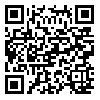Tue, Apr 15, 2025
[Archive]
Volume 6, Issue 3 (September 2010)
IJEEE 2010, 6(3): 156-167 |
Back to browse issues page
Download citation:
BibTeX | RIS | EndNote | Medlars | ProCite | Reference Manager | RefWorks
Send citation to:



BibTeX | RIS | EndNote | Medlars | ProCite | Reference Manager | RefWorks
Send citation to:
Dosaranian Moghadam M, Bakhshi H, Dadashzadeh G. Joint Closed-Loop Power Control and Base Station Assignment for DS-CDMA Receiver in Multipath Fading Channel with Adaptive Beamforming Method. IJEEE 2010; 6 (3) :156-167
URL: http://ijeee.iust.ac.ir/article-1-317-en.html
URL: http://ijeee.iust.ac.ir/article-1-317-en.html
Abstract: (12687 Views)
In this paper, we propose smart step closed-loop power control (SSPC)
algorithm and base station assignment based on minimizing the transmitter power (BSAMTP)
technique in a direct sequence-code division multiple access (DS-CDMA) receiver in
the presence of frequency-selective Rayleigh fading. This receiver consists of three stages.
In the first stage, with conjugate gradient (CG) adaptive beamforming algorithm, the
desired users’ signal in an arbitrary path is passed and the inter-path interference is
canceled in other paths in each RAKE finger. Also in this stage, the multiple access
interference (MAI) from other users is reduced. Thus, the matched filter (MF) can be used
for the MAI reduction in each RAKE finger in the second stage. Also in the third stage, the
output signals from the matched filters are combined according to the conventional
maximal ratio combining (MRC) principle and then are fed into the decision circuit of the
desired user. The simulation results indicate that the SSPC algorithm and the BSA-MTP
technique can significantly improve the network bit error rate (BER) in comparison with
other algorithms. Also, we observe that significant savings in total transmit power (TTP)
are possible with our proposed methods.
Type of Study: Research Paper |
Subject:
Evolutionary Computation
Received: 2010/09/15 | Revised: 2010/09/19 | Accepted: 2013/12/30
Received: 2010/09/15 | Revised: 2010/09/19 | Accepted: 2013/12/30
| Rights and permissions | |
 |
This work is licensed under a Creative Commons Attribution-NonCommercial 4.0 International License. |







